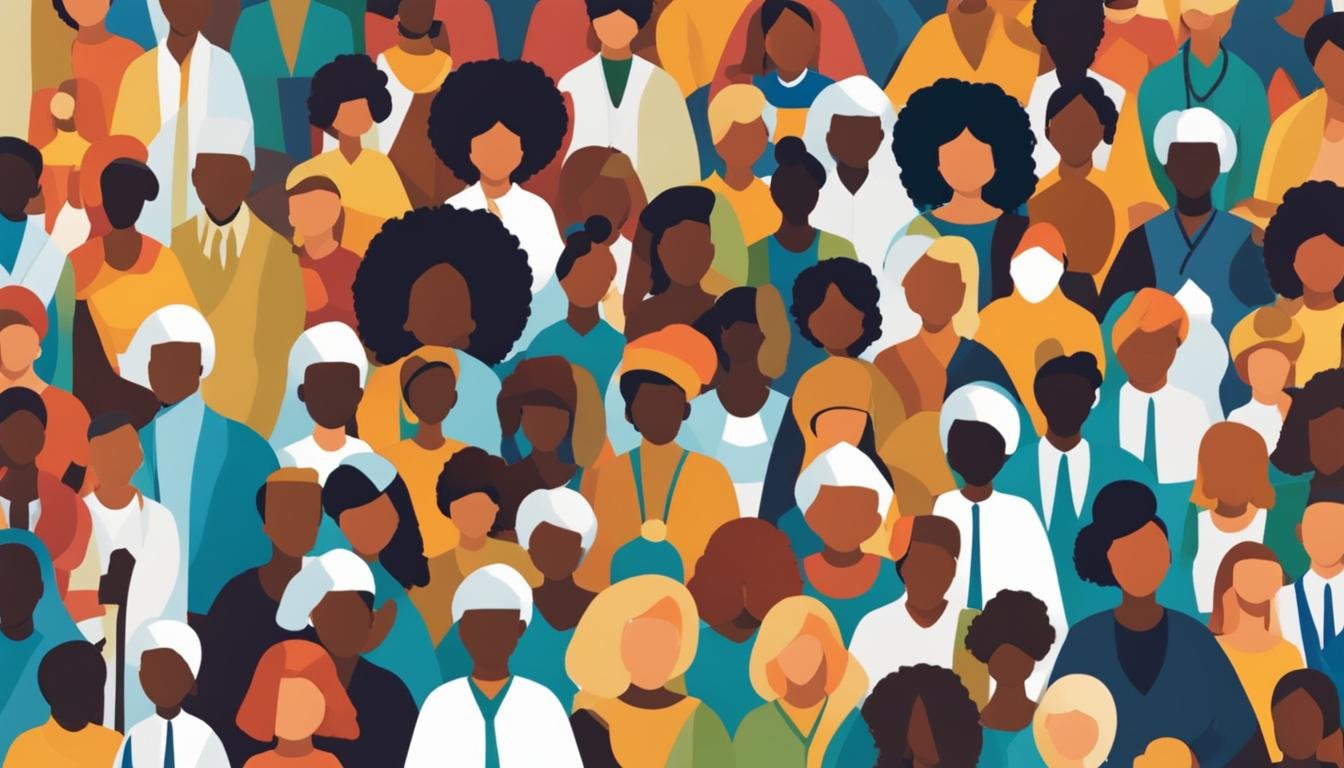What is eliminating health disparities one of the 4 main goals of?
Healthy People 2030, a comprehensive health promotion and disease prevention initiative, has identified eliminating health disparities as one of its four main goals. This goal aims to address the unequal distribution of health outcomes among different population groups. Healthy People 2030 defines health disparities as differences in health status that are closely linked to social, economic, and environmental disadvantages. It recognizes that various factors, such as systemic bias and structural racism, contribute to these disparities. By focusing on health equity and eliminating disparities, Healthy People 2030 aims to improve the overall health and well-being of all individuals and communities.
Key Takeaways:
- Healthy People 2030 has identified eliminating health disparities as one of its main goals.
- Health disparities are differences in health status linked to social, economic, and environmental disadvantages.
- Systemic bias and structural racism contribute to health disparities.
- Healthy People 2030 aims to improve health equity and the well-being of all individuals and communities.
Defining health equity and health disparities
According to Healthy People 2030, health equity is defined as the attainment of the highest level of health for all individuals. Achieving health equity requires valuing everyone equally and making ongoing efforts to address avoidable inequalities and historical and contemporary injustices. On the other hand, health disparities are defined as specific types of health differences that are closely tied to social, economic, and environmental disadvantage. These disparities adversely affect certain groups of people who have faced greater obstacles to health due to factors such as race, ethnicity, socioeconomic status, gender, age, disability, and geographic location. Healthy People 2030 emphasizes the importance of understanding and addressing these disparities to achieve health equity.
| Health Equity | Health Disparities | |
|---|---|---|
| Definition | The attainment of the highest level of health for all individuals. | Specific types of health differences linked to social, economic, and environmental disadvantage. |
| Affected Factors | Valuing everyone equally, addressing inequalities and injustices. | Race, ethnicity, socioeconomic status, gender, age, disability, geographic location. |
| Goal | Ensure equal access to healthcare and optimal health outcomes for all. | Eliminate disparities and create a more equitable healthcare system. |
| Importance | Improves overall well-being and fosters a healthier society. | Reduces inequities and promotes fairness in healthcare delivery. |
How Healthy People 2030 Addresses Health Disparities
Healthy People 2030 takes a comprehensive and multi-faceted approach to addressing health disparities. The initiative recognizes the urgent need to reduce inequalities and improve health outcomes for all individuals and communities. By monitoring differences across population groups and tracking progress towards specific objectives, Healthy People 2030 aims to achieve health equity.
The initiative provides evidence-based resources and interventions that are specifically targeted at population groups facing health disparities. These resources and interventions are designed to address the unique challenges and barriers faced by these populations, with the ultimate goal of improving their health outcomes.
Healthy People 2030 promotes strategies that have been proven to be effective in reducing disparities and improving health. By encouraging the evaluation of interventions and their impact on reducing health disparities, the initiative ensures that resources are being allocated to interventions that are making a positive difference.
In order to address health disparities, Healthy People 2030 emphasizes the importance of collaboration between different sectors. By fostering partnerships and collaborations across various fields, such as healthcare, education, housing, and employment, Healthy People 2030 aims to create a coordinated and comprehensive approach to reducing inequalities and improving health outcomes.

The role of social determinants of health in health disparities
Healthy People 2030 recognizes the significant role of social determinants of health in contributing to health disparities. These determinants refer to the conditions and environments in which people live, including factors such as access to safe housing, transportation, education, employment opportunities, nutritious food, clean air and water, and freedom from discrimination and violence.
It is important to note that disparities in these social determinants can result in unequal access to healthcare and healthy environments, leading to unequal health outcomes among different population groups. For example, individuals living in neighborhoods with limited access to grocery stores may have difficulty obtaining fresh and healthy food, which can contribute to higher rates of obesity and other related health issues.
Healthy People 2030 aims to address these social determinants of health by creating social, physical, and economic environments that promote health equity and improve health for all. By focusing on improving access to necessary resources and removing barriers to healthcare and healthy living, the initiative seeks to reduce health disparities and achieve equal health outcomes.
“Social determinants of health are the key drivers of health inequities and health disparities that persist across society. By understanding and addressing these determinants, we can work towards creating a society where everyone has the opportunity to achieve their highest level of health.”
By recognizing the importance of social determinants of health, Healthy People 2030 aims to create a comprehensive approach to healthcare that goes beyond medical interventions and focuses on addressing the underlying factors that contribute to health disparities. This holistic approach recognizes that improving health outcomes requires interventions at both the individual and societal levels.
Conclusion
Healthy People 2030, a comprehensive health promotion and disease prevention initiative, has set out to eliminate health disparities as one of its main goals. By defining health equity, addressing disparities, and providing tools and resources, Healthy People 2030 aims to promote equal access to healthcare and improve health outcomes for all individuals and communities.
This initiative recognizes that health disparities are closely tied to social, economic, and environmental disadvantages. Factors such as systemic bias and structural racism contribute to these disparities, creating unequal health outcomes for different population groups. To achieve health equity, Healthy People 2030 emphasizes the importance of understanding and addressing these disparities.
Healthy People 2030 takes a multi-faceted approach to tackle health disparities. Through monitoring, evidence-based interventions, and collaboration between sectors, it aims to reduce inequalities and improve health for everyone. By addressing the social determinants of health, such as access to housing, education, and employment opportunities, Healthy People 2030 seeks to create environments that promote health equity and a more equitable society.
With ongoing monitoring and a focus on evidence-based interventions, Healthy People 2030 aims to close the gap in healthcare and eliminate health disparities. By striving for health equity, this initiative is working towards a future where everyone has an equal opportunity to achieve optimal health and well-being.
FAQ
Why is eliminating health disparities one of the 4 main goals of Healthy People 2030?
Eliminating health disparities is one of the main goals of Healthy People 2030 because it aims to address the unequal distribution of health outcomes among different population groups. By focusing on health equity and eliminating disparities, Healthy People 2030 aims to improve the overall health and well-being of all individuals and communities.
How does Healthy People 2030 define health equity and health disparities?
Healthy People 2030 defines health equity as the attainment of the highest level of health for all individuals, requiring ongoing efforts to address avoidable inequalities and historical and contemporary injustices. Health disparities are defined as specific types of health differences closely tied to social, economic, and environmental disadvantage. These disparities adversely affect certain groups who face greater obstacles to health due to factors such as race, ethnicity, socioeconomic status, gender, age, disability, and geographic location.
How does Healthy People 2030 address health disparities?
Healthy People 2030 takes a multi-faceted approach to address health disparities. It monitors differences across population groups and tracks progress towards meeting objectives related to health disparities. The initiative also provides evidence-based resources and interventions targeted at specific population groups to improve health outcomes for all individuals. Healthy People 2030 promotes strategies proven to be effective, encourages evaluation of interventions, and fosters collaborations between different sectors to reduce inequalities and improve health for everyone.
What is the role of social determinants of health in health disparities according to Healthy People 2030?
According to Healthy People 2030, social determinants of health play a significant role in contributing to health disparities. These determinants are the conditions and environments in which people live, including factors such as access to safe housing, transportation, education, employment opportunities, nutritious food, clean air and water, and freedom from discrimination and violence. Disparities in these social determinants can lead to unequal access to healthcare and healthy environments, resulting in disparate health outcomes. Healthy People 2030 aims to address these social determinants to create social, physical, and economic environments that promote health equity and improve health for all.
How does Healthy People 2030 promote equality in healthcare and improve health outcomes?
Healthy People 2030 promotes equality in healthcare and improves health outcomes by defining health equity, addressing health disparities, and providing tools and resources for action. Through ongoing monitoring, evidence-based interventions, and a focus on reducing disparities, Healthy People 2030 strives to close the gap in healthcare and create a healthier, more equitable society for everyone.





